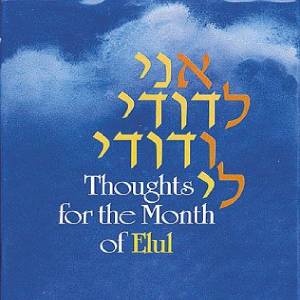
Introduction
The Holy Bible begins with the tree of life which was in the midst of the Garden of Eden (Gen 2:9) but it soon got lost after the sin of the first Adam (Adam ha rishon).
The Holy Bible begins with the tree of life which was in the midst of the Garden of Eden (Gen 2:9) but it soon got lost after the sin of the first Adam (Adam ha rishon).
The Holy Bible begins with the tree of life which was in the midst of the Garden of Eden (Gen 2:9) but it soon got lost after the sin of the first Adam (Adam ha rishon). However, it soon re-emerges at the end of the book of Revelation, after the death and resurrection of the second Adam (Adam ha sheni), Yahshua Messiah. In the book of Revelation, the Tree of Life is seen in the midst of the garden in the Paradise of God. “...in the middle of the street. On this side of the river and on that was the tree of life (etz ha chayim), bearing twelve kinds of fruits, yielding its fruit every month.” (Rev 12:2) Notice that the twelve fruits of the Tree of Life are directly linked with the twelve months of the Hebrew Biblical Calendar, thereby implying that each Hebrew month and Feast should give revelation about The Holy One of Israel.
Every month has its blessings, mission and unique challenges, and so does this month. The month of Elul is the sixth month of the Biblical Calendar which is usually in the late summer or the early fall. Elul is the beginning of the preparation for the fall holidays that take place on the seventh month beginning with the New Year (Rosh Hashanah) on the 1st of Tishri/Ethanim, the Day of Atonement (Yom Kippur) on 10th Tishri and the Feast of Tabernacles (Sukkot) on the 15th of Tishri.
In the Torah, the month of Elul is simply called the sixth month. The name “Elul” is a name that returned with the Jews after the 70 year Babylonian exile. Much like other Hebrew month names like Nisan, Sivan, Tammuz and Av, Elul is also of Babylonian origin. Among the Jewish people, the name ”Elul” is regarded to be an acronym for the verse, “Ani L’dodi, V’dodi Li” – “I am my beloved’s and my beloved is mine” (Songs of Solomon 6:3). Something to note is that at the end of each Hebrew phrase is the letter Yod which is the ‘i’ sound and it has a numerical value of 10. Therefore, the verse when combined has a numerical value of 40. The number 40 signifies the forty days of teshuvah (repentance) that run from the Elul 1 to Tishri 10.
The month of Elul is regarded as the beginning of the season of Teshuvah that runs from Elul to Yom Kippur (Day of Atonement). Teshuvah is translated as repentance though it literally means to shuv (return) towards God. This is an opportune time to return to our Maker as we prepare for the Days of Awe (1st – 10th Tishri).
But why do we need forty days? The number forty is of much significance in the bible. Scientifically, it takes forty days for a fetus to be formed in the mother’s womb. More importantly, Yahshua also spent 40 days in the wilderness (Luke 4:2). Moses ascended Mt Sinai three consecutive times for forty days and forty nights. His first ascent was on Sivan 6, the third month, after receiving the Ten Commandments, so that he could receive the rest of the Torah. After he returned on 17th Tammuz, the fourth month, he found the children of Israel worshipping the Golden Calf which made him to smash the stone tablets (Ex. 32:19). He then re-ascended Mt Sinai on 19th Tammuz to intercede for the Israelites who had angered Adonai because of their idolatry. He returned to them on 29th Av and later re-ascended again on 1st Elul with carved stone tablets that Elohim had commanded him to go carve (Ex. 34:1). He returned forty days later at the end of Yom Kippur with the second set of tablets in hand (Ex. 34:29) and also with the assurance of God’s forgiveness since God had revealed His Divine name to Moses.
The month of Elul therefore represents a period where Moses spent the 40 days and nights preparing the second set of tablets after the sin of the Golden calf. This period of teshuvah therefore represents a time for national forgiveness and repentance of sin for Israel. Teshuvah means turning away from sin and turning towards God. It is a time to surrender to God and the truth. It is a time to diminish our ego and regard God as the sole authority and first principle of all reasoning.
Repentance involves forsaking the sin, regretting our detachment with Elohim, confessing the truth which also means saying the same thing with God about your sinful condition, making amends and finally, accepting that your repentance has been accepted. Repentance however is not an end in itself but a means to a sinless life in the world to come (olam haba). It was Nelson Mandela who said, “A saint is a sinner who keeps on trying,” meaning that a saint is a master of repentance.
We are to be eternally grateful to the Almighty because He creates the cure before the plague just as it written, we are redeemed, “…with the precious blood of Messiah, as a lamb without blemish and without spot: who verily was foreordained before the foundation of the world...” (1 Peter 1:19-20)
Deuteronomy 30:2 – “And return to the Lord your God, you and your children, and obey his voice in all that I command you today, with all your heart and with all your soul,”